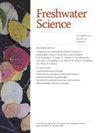我们未能保护溪流及其山谷:呼吁放弃河岸开发
IF 1.6
4区 环境科学与生态学
Q3 ECOLOGY
引用次数: 4
摘要
几十年前,Noel Hynes博士雄辩地总结了溪流与其山谷之间固有的相互联系,并提出了人类对山谷的改变将对淡水系统产生直接负面影响的观点。目前,淡水生物多样性危机波及各大洲,需要环境规划者、从业者和政策制定者给予紧急关注,以保护溪流及其山谷。在我们努力减缓淡水生物多样性的丧失和恢复淡水生态系统的同时,是时候重新审视海恩斯发出的重要信息了。可以采取的最明显和最直接的行动之一是“后退”,即限制与淡水系统(包括溪流、河流、湖泊和湿地)紧邻的泛滥平原和河岸地区的人类活动和新开发,同时最大限度地减少现有开发区域的影响和风险。从减少侵蚀和洪水破坏到保持冷水温度、过滤污染物、保护关键栖息地和实现横向连通,完整的河岸带减轻了许多破坏淡水生态系统的威胁。已经有很多研究来确定最佳的后退和缓冲带宽度,以防止伤害。因此,在许多地区,我们保护溪流及其山谷的能力并不受自然科学的限制,而是由于我们未能始终如一地应用泛滥平原和河岸法规,以及缺乏政治意愿。我们太快了,不能用环境换取短期经济发展。在已经开发的领域,解决方案更为复杂,但在许多情况下,这是修复受损生态系统和解决脆弱发展的经济和社会风险的关键优先事项。我们需要重新定义我们与淡水生态系统的关系,第一步是后退,给淡水生态系统愈合的机会,同时确保迄今为止完整的河岸地区继续支持淡水恢复能力。通过这样做,我们还将获得适应气候的好处,因为维护完整的河岸区域是一个有效的基于自然的解决方案。本文章由计算机程序翻译,如有差异,请以英文原文为准。
Our failure to protect the stream and its valley: A call to back off from riparian development
Decades ago, Dr Noel Hynes eloquently summarized the inherent interconnectedness of a stream and its valley and made the case that human alteration of the valley would have direct negative consequences for freshwater systems. Currently, the freshwater biodiversity crisis extends across all continents and demands urgent attention from environmental planners, practitioners, and policymakers to protect streams and their valleys. As we work to slow losses of freshwater biodiversity and restore freshwater ecosystems, it is time to revisit the important messages from Hynes. One of the most obvious and immediate actions that could be undertaken is to “back off”—that is, to limit human activity and new development in floodplain and riparian areas immediately adjacent to freshwater systems, including streams, rivers, lakes, and wetlands, while minimizing impacts and risks in areas with existing development. From reducing erosion and flood damage to maintaining cool water temperatures, filtering pollutants, protecting critical habitats, and enabling lateral connectivity, intact riparian zones mitigate many of the threats that degrade freshwater ecosystems. There has been much research to identify optimal setbacks and buffer-strip widths to protect against harm. As such, in many areas, our ability to protect the stream and its valley is not limited by natural science but rather our failure to consistently apply floodplain and riparian regulations and the absence of political will. We are too quick to trade off the environment for short-term economic development. In areas that are already developed, solutions are more complicated but, in many cases, represent a key priority for healing damaged ecosystems and for addressing economic and social risks of vulnerable development. We need to redefine our relationship with freshwater ecosystems, and the first step is to back off and give freshwater ecosystems the opportunity to heal while ensuring that as-of-yet intact riparian areas continue to support freshwater resiliency. In doing so, we will also gain climate adaptive benefits, given that maintaining intact riparian areas is an effective nature-based solution.
求助全文
通过发布文献求助,成功后即可免费获取论文全文。
去求助
来源期刊

Freshwater Science
ECOLOGY-MARINE & FRESHWATER BIOLOGY
CiteScore
4.10
自引率
0.00%
发文量
49
审稿时长
6-12 weeks
期刊介绍:
Freshwater Science (FWS) publishes articles that advance understanding and environmental stewardship of all types of inland aquatic ecosystems (lakes, rivers, streams, reservoirs, subterranean, and estuaries) and ecosystems at the interface between aquatic and terrestrial habitats (wetlands, riparian areas, and floodplains). The journal regularly features papers on a wide range of topics, including physical, chemical, and biological properties of lentic and lotic habitats; ecosystem processes; structure and dynamics of populations, communities, and ecosystems; ecology, systematics, and genetics of freshwater organisms, from bacteria to vertebrates; linkages between freshwater and other ecosystems and between freshwater ecology and other aquatic sciences; bioassessment, conservation, and restoration; environmental management; and new or novel methods for basic or applied research.
 求助内容:
求助内容: 应助结果提醒方式:
应助结果提醒方式:


